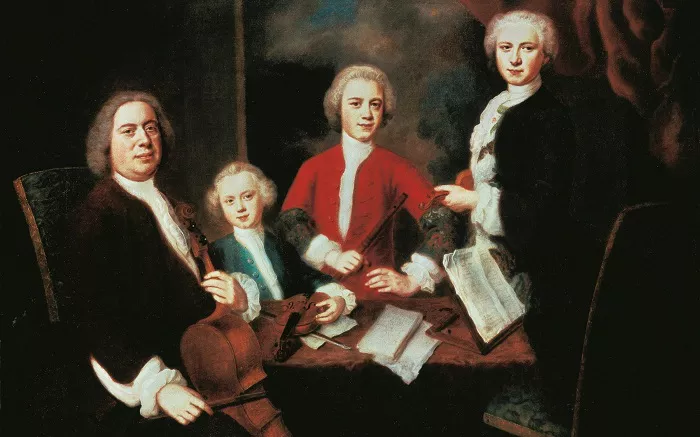Fantasia is a term deeply entwined with classical music, conjuring images of grandeur, creativity, and imagination. In this article, we delve into the realm of Fantasia in classical music, exploring its history, impact, notable compositions, and its relevance in contemporary times. From its origins in the Renaissance to its evolution through the Baroque, Classical, Romantic, and Modern eras, Fantasia has remained a captivating genre that continues to inspire musicians and audiences alike.
The Origins of Fantasia
The term “Fantasia” finds its roots in the Italian word “fantasia,” meaning imagination or fantasy. It emerged during the Renaissance period as a musical form that allowed composers to showcase their creativity and improvisational skills. Early Fantasias were often written for keyboard instruments such as the harpsichord or organ, with composers like John Dowland and William Byrd creating intricate and expressive pieces within this genre.
The Baroque Era: Fantasia Takes Shape
During the Baroque era, Fantasia underwent further development, especially in the hands of composers such as Johann Sebastian Bach and Georg Philipp Telemann. Bach’s “Fantasia and Fugue in G Minor” for organ remains a hallmark of this period, showcasing intricate counterpoint and virtuosic performance techniques. Fantasias during this era often featured free-form structures, allowing composers to explore a range of moods and thematic variations.
Classical Period: Formalization and Innovation
In the Classical period, composers like Wolfgang Amadeus Mozart and Ludwig van Beethoven contributed to the evolution of Fantasia. Mozart’s “Fantasia in D minor” for piano, K. 397, displays a blend of improvisatory elements with structured themes, highlighting the shift towards more formalized compositions within the Fantasia genre. Beethoven’s “Fantasia in C minor” for piano, Op. 80, introduced elements of narrative and drama, foreshadowing the Romantic era’s emphasis on emotional expression.
The Romantic Era: Fantasia as Emotional Expression
The Romantic era witnessed a flourishing of Fantasia compositions, with composers such as Franz Schubert, Robert Schumann, and Frédéric Chopin exploring the genre’s expressive potential. Schubert’s “Wanderer Fantasy” for piano, Op. 15, embodies the Romantic spirit with its passionate themes and virtuosic demands. Schumann’s “Fantasia in C Major” for piano, Op. 17, showcases his innovative approach to form and structure, blurring the lines between fantasy and sonata.
Modern Era and Beyond: Fantasia in Contemporary Context
In the modern era, composers continued to explore Fantasia as a means of pushing musical boundaries. Sergei Rachmaninoff’s “Rhapsody on a Theme of Paganini” combines elements of Fantasia with variations, creating a dynamic and captivating work for piano and orchestra. Contemporary composers like John Williams have also embraced Fantasia, as seen in his “Fantasia on a Theme by Thomas Tallis,” which reimagines Renaissance music in a modern orchestral setting.
Notable Fantasias Across Instruments
Fantasia is not limited to any specific instrument, and its versatility has led to notable compositions across various musical mediums:
Piano: Apart from the aforementioned works, Franz Liszt’s “Fantasia and Fugue on the Theme B-A-C-H” showcases the piano’s expressive range and technical prowess.
Orchestral: Ralph Vaughan Williams’ “Fantasia on a Theme by Thomas Tallis” exemplifies the orchestral Fantasia, with its lush harmonies and evocative themes.
Choral: John Rutter’s “Requiem: IV. Pie Jesu” incorporates elements of Fantasia within the choral setting, creating a serene and introspective atmosphere.
Instrumental Ensembles: Fantasia has also found a place in chamber music, with composers like Benjamin Britten crafting works like “Simple Symphony, Op. 4,” which includes a playful Fantasia movement.
The Influence of Fantasia on Film Music
The enchanting nature of Fantasia has not gone unnoticed in the world of film music. Disney’s “Fantasia” film, released in 1940, brought classical music to a wider audience through animated visuals that accompanied iconic compositions. The film’s success highlighted Fantasia’s ability to evoke vivid imagery and emotions, making it a staple in the intersection of music and visual art.
Fantasia in the Digital Age: Accessibility and Innovation
In the digital age, Fantasia remains accessible to a global audience through online platforms, streaming services, and digital sheet music repositories. Musicians can explore a vast repertoire of Fantasias from different eras and styles, fostering creativity and innovation in performance and composition. Virtual concerts and multimedia collaborations further expand Fantasia’s reach, merging traditional forms with cutting-edge technology.
Conclusion
In conclusion, Fantasia in classical music embodies the timeless appeal of imagination, creativity, and emotional expression. From its humble origins in the Renaissance to its modern adaptations in film and digital media, Fantasia continues to captivate audiences and inspire musicians across generations. Its ability to transcend musical boundaries and evoke a sense of wonder makes Fantasia a cherished and essential genre in the rich tapestry of classical music.

